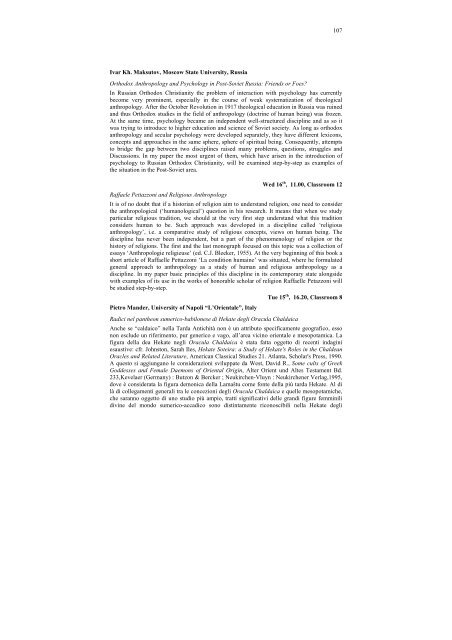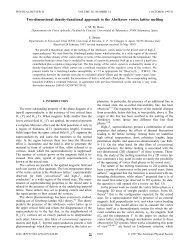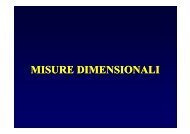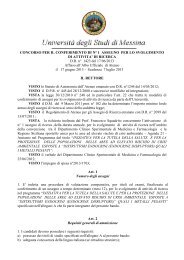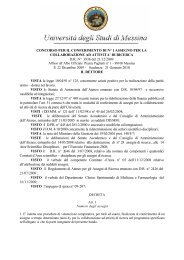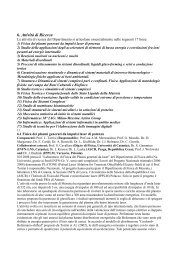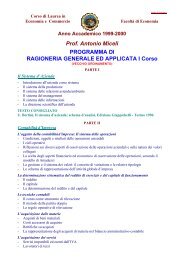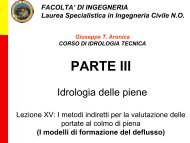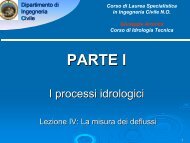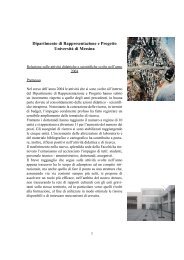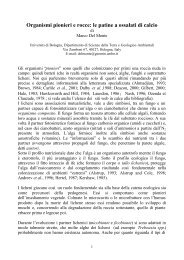PROGRAMME AND ABSTRACTS - Università degli Studi di Messina
PROGRAMME AND ABSTRACTS - Università degli Studi di Messina
PROGRAMME AND ABSTRACTS - Università degli Studi di Messina
Create successful ePaper yourself
Turn your PDF publications into a flip-book with our unique Google optimized e-Paper software.
Ivar Kh. Maksutov, Moscow State University, Russia<br />
Orthodox Anthropology and Psychology in Post-Soviet Russia: Friends or Foes?<br />
107<br />
In Russian Orthodox Christianity the problem of interaction with psychology has currently<br />
become very prominent, especially in the course of weak systematization of theological<br />
anthropology. After the October Revolution in 1917 theological education in Russia was ruined<br />
and thus Orthodox stu<strong>di</strong>es in the field of anthropology (doctrine of human being) was frozen.<br />
At the same time, psychology became an independent well-structured <strong>di</strong>scipline and as so it<br />
was trying to introduce to higher education and science of Soviet society. As long as orthodox<br />
anthropology and secular psychology were developed separately, they have <strong>di</strong>fferent lexicons,<br />
concepts and approaches in the same sphere, sphere of spiritual being. Consequently, attempts<br />
to bridge the gap between two <strong>di</strong>sciplines raised many problems, questions, struggles and<br />
Discussions. In my paper the most urgent of them, which have arisen in the introduction of<br />
psychology to Russian Orthodox Christianity, will be examined step-by-step as examples of<br />
the situation in the Post-Soviet area.<br />
Raffaele Pettazzoni and Religious Anthropology<br />
Wed 16 th , 11.00, Classroom 12<br />
It is of no doubt that if a historian of religion aim to understand religion, one need to consider<br />
the anthropological (‘humanological’) question in his research. It means that when we study<br />
particular religious tra<strong>di</strong>tion, we should at the very first step understand what this tra<strong>di</strong>tion<br />
considers human to be. Such approach was developed in a <strong>di</strong>scipline called ‘religious<br />
anthropology’, i.e. a comparative study of religious concepts, views on human being. The<br />
<strong>di</strong>scipline has never been independent, but a part of the phenomenology of religion or the<br />
history of religions. The first and the last monograph focused on this topic was a collection of<br />
essays ‘Anthropologie religieuse’ (ed. C.J. Bleeker, 1955). At the very beginning of this book a<br />
short article of Raffaelle Pettazzoni ‘La con<strong>di</strong>tion humaine’ was situated, where he formulated<br />
general approach to anthropology as a study of human and religious anthropology as a<br />
<strong>di</strong>scipline. In my paper basic principles of this <strong>di</strong>scipline in its contemporary state alongside<br />
with examples of its use in the works of honorable scholar of religion Raffaelle Petazzoni will<br />
be stu<strong>di</strong>ed step-by-step.<br />
Pietro Mander, University of Napoli “L’Orientale”, Italy<br />
Ra<strong>di</strong>ci nel pantheon sumerico-babilonese <strong>di</strong> Hekate <strong>degli</strong> Oracula Chaldaica<br />
Tue 15 th , 16.20, Classroom 8<br />
Anche se “caldaico” nella Tarda Antichità non è un attributo specificamente geografico, esso<br />
non esclude un riferimento, pur generico e vago, all’area vicino orientale e mesopotamica. La<br />
figura della dea Hekate negli Oracula Chaldaica è stata fatta oggetto <strong>di</strong> recenti indagini<br />
esaustive: cfr. Johnston, Sarah Iles, Hekate Soteira: a Study of Hekate's Roles in the Chaldean<br />
Oracles and Related Literature, American Classical <strong>Stu<strong>di</strong></strong>es 21. Atlanta, Scholar's Press, 1990.<br />
A questo si aggiungano le considerazioni sviluppate da West, David R., Some cults of Greek<br />
Goddesses and Female Daemons of Oriental Origin, Alter Orient und Altes Testament Bd.<br />
233,Kevelaer (Germany) : Butzon & Bercker ; Neukirchen-Vluyn : Neukirchener Verlag,1995,<br />
dove è considerata la figura demonica della Lamaštu come fonte della più tarda Hekate. Al <strong>di</strong><br />
là <strong>di</strong> collegamenti generali tra le concezioni <strong>degli</strong> Oracula Chaldaica e quelle mesopotamiche,<br />
che saranno oggetto <strong>di</strong> uno stu<strong>di</strong>o più ampio, tratti significativi delle gran<strong>di</strong> figure femminili<br />
<strong>di</strong>vine del mondo sumerico-acca<strong>di</strong>co sono <strong>di</strong>stintamente riconoscibili nella Hekate <strong>degli</strong>


